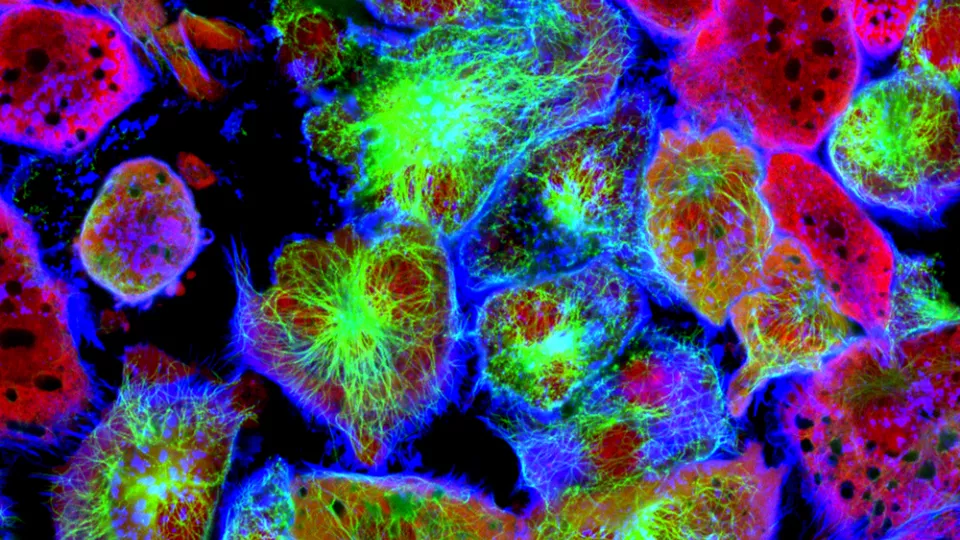
Treating Neuroblastoma: With or Without G-CSF?
A recent study—published online in the journal of Cancer Research on April 23—demonstrates that a growth factor called G-CSF, commonly used in high-risk neuroblastoma treatment, leads to increased tumor growth and metastasis by stimulating cancer stem cells in an experimental model of neuroblastoma. The study has worried parents, concerned that the use of G-CSF may actually contribute to tumor growth, metastasis or recurrence.
“Our laboratory findings suggest that there exists a theoretical danger to G-CSF, but we believe the benefits still outweigh the possible risks,” said Eugene Kim, MD, a surgeon at Children’s Hospital Los Angeles and co-senior investigator on the study with Dr. Jason Shohet from Texas Children’s Cancer Center. “How G-CSF affects neuroblastoma in laboratory settings is difficult to translate to patients.”
The Center for Children’s Cancer and Blood Diseases at CHLA has one of the largest neuroblastoma treatment programs in the country. Although neuroblastoma is the second most common solid tumor occurring in children, it is considered a rare disease—with approximately 650 new cases occurring each year.
Half of all children diagnosed with this condition have high-risk disease, meaning that they are less responsive to treatment and have a much poorer chance of survival. To give these children the very best chance at recovery, standard therapy includes high-dose chemotherapy because it is more effective at killing tumor cells.
Along with killing tumor cells, high-dose chemotherapy also destroys infection-fighting white blood cells, an important part of the immune system. For patients with neuroblastoma receiving high-dose chemotherapy, doctors also give G-CSF, which causes the bone marrow to produce more white blood cells. This combination therapy has been effective for treating children with high-risk neuroblastoma and has led to improved survival and outcomes.
The recent study demonstrated that a small cancer stem cell population within neuroblastoma expresses the receptor for G-CSF—granulocyte colony-stimulating factor. Cancer stem cells are like super cancer cells with the ability to re-create whole tumors from a single cell, Kim explained.
The recent study led by researchers at Baylor College of Medicine, demonstrated in the lab that G-CSF caused an increase in the number of cancer stem cells as well as increased tumor growth and metastasis. However, Kim and Shohet state that outcomes in neuroblastoma patients are better than they have ever been with the current therapy, which includes the use of G-CSF. “While we think it is important to study the risks and benefits of G-CSF use in neuroblastoma and other cancer patients, we do not recommend stopping the use of G-CSF in neuroblastoma at this time, as doing so may compromise the intensity of the chemotherapy treatment.”
“Our best clinical data shows that G-CSF is safe, and that treatment with dose-intensive chemotherapy and G-CSF has led to improved outcomes in children with neuroblastoma,” says physician-researcher Araz Marachelian, MD, director of the clinical neuroblastoma program at CHLA and also medical director of New Approaches to Neuroblastoma Therapy (NANT) Consortium. NANT, headquartered at Children’s Hospital Los Angeles, is an association of 15 universities and children’s cancer centers in the U.S. and Canada conducting clinical trials on therapies to treat neuroblastoma.
“More research is needed before making any changes to an effective treatment strategy,” she concludes.
Image caption: Fluorescent-labelled neuroblastoma tumor cells under the microscope. Image credit: Shutterstock

![10E4_CHLA90_2[2] (tumor-associated macrophages)](/sites/default/files/styles/16x9_half/public/thumbnails/image/10E4_CHLA90_2%5B2%5D%20%281%29.jpg.webp?itok=mArbKB0V)
